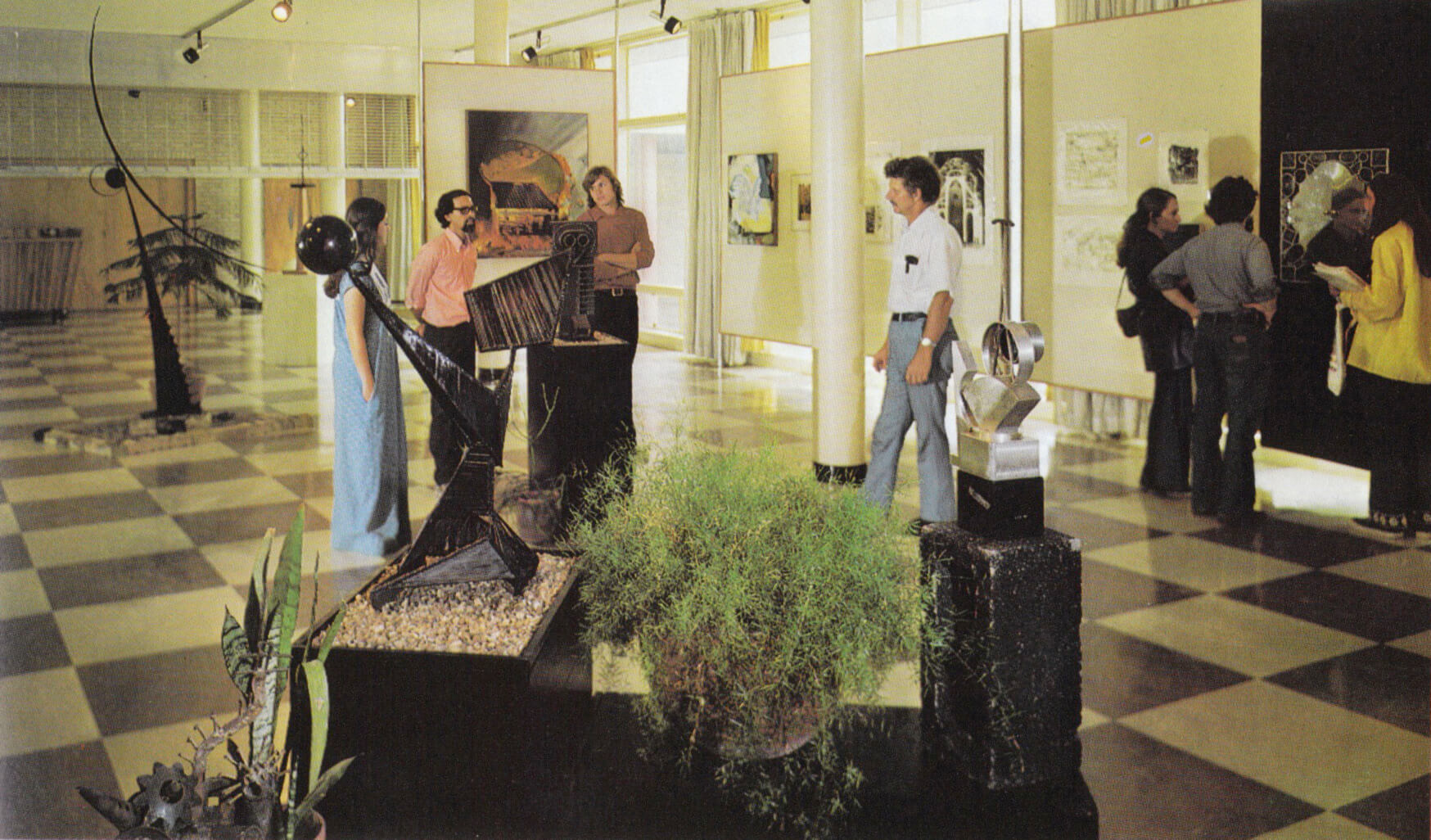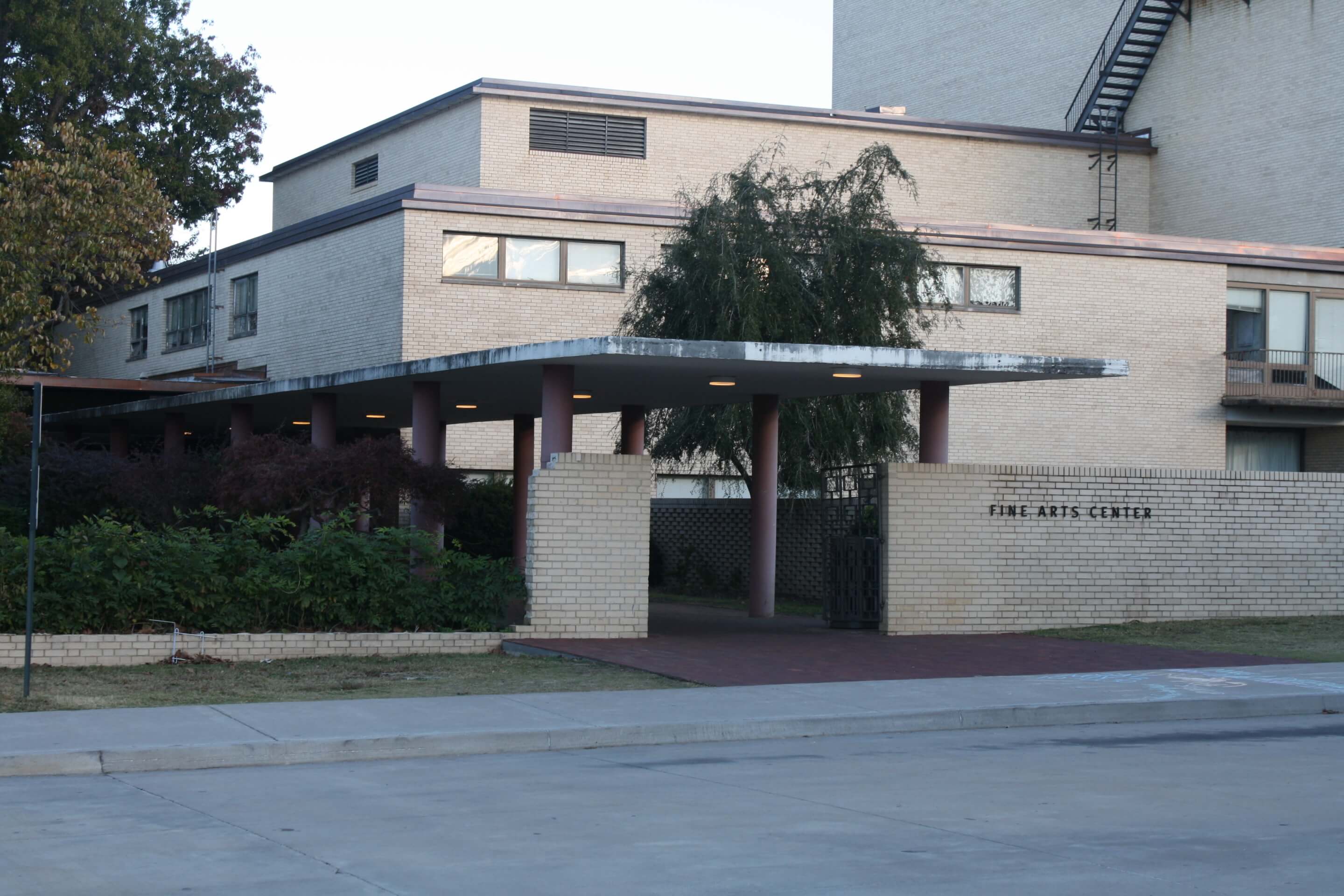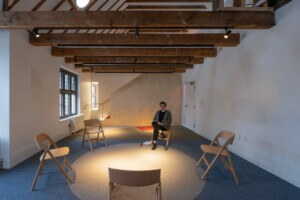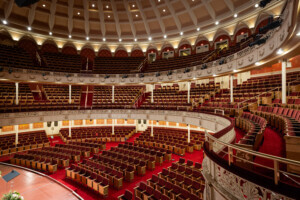The University of Arkansas has announced that Deborah Berke Partners (DBP) and local firm Miller Boskus Lack (MBL) will head a $38 million refresh of the Fine Arts Center, an International-style gem at the heart of the school’s Fayetteville campus.
Referring to the Fine Arts Center as one of the “campus’ most loved, used and historic places,” Todd Shields, dean of the Fulbright College of Arts & Sciences at U of A, said in a university-issued press release that the largely grant-funded renovation efforts will “preserve our past, while helping us continue to evolve and provide the latest educational amenities which will further enhance the outstanding fine arts education we provide.”
The 1951 building, added to the National Register of Historic Places in 2009, was designed by famed modernist Edward Durrell Stone. A native son of Fayetteville and a student at the U of A (albeit briefly), Stone also designed the school’s (former) Sigma Nu frat house, a now-demolished student apartment complex, and a large number of landmark midcentury buildings thousands of miles away from beloved his alma mater including the United States Embassy in New Delhi, the Keller Center at the University of Chicago, the Museum of Modern Art in New York, and the Kennedy Center in Washington, D.C.

MBL and DBP will work closely with Fulbright College on the project and lead a larger team that includes Wiss, Janney, Elstner Associates (historic preservation consultant), Con-Real Construction (construction manager), Development Consultants Inc. (civil engineer), Martin/Martin (structural engineer), HSA Engineering (mechanical, electrical, plumbing and fire protection engineering), and Ground Control, a Philadelphia-based landscape architecture firm that will “ensure campus master planning, preservation, design and sustainability principles are followed throughout the project,” per a U of A press release. London-headquartered theatre and acoustics design consultancy Charcoalblue rounds out the team and will lead modernization efforts at the Fine Arts Center’s University Theatre.
As noted in the announcement, New York-based DBP is a natural fit for the Fine Arts Center restoration project considering the firm’s extensive track record in carefully breathing new purpose into historic buildings and itsprevious higher education-focused projects.
U of A Chancellor Joe Steinmetz added that DBP founder Deborah Berke and her eponymous firm “have a unique and needed perspective on restoring and creating campus spaces that have both high function and beauty of form.”
“We are delighted to be working with the University of Arkansas to transform the Fine Arts Center for the 21st century,” said Berke, who is also dean of the Yale School of Architecture, in a statement. “The university has been an excellent steward of this well-used, and well-loved hub of creativity and learning, and we look forward to revitalizing and adapting it to meet the needs of the present and the future.”

Restoration work will focus on both the building’s exterior and interior as well as on the surrounding site and include an overhaul of the lobby, which will return back to its original use as a pre-event space for the University Theatre and Stella Boyle Smith Concert Hall. (It was subdivided and converted into a series of small exhibition spaces years ago). As part of the lobby revamp, floor-to-ceiling glass windows—a Stone signature—will be reintroduced. Jeannie Hulen, Fulbright College’s associate dean of fine arts, said: “By opening up the lobby space, we can better welcome the community into this space and create more of the intentional, collaborative connections that the center’s original designers envisioned.
As detailed by U of A, Stone’s Fine Arts Center was the first academic arts building in the country to bring a number of disciplines— fine and applied arts, architecture, dance, music, sculpture, painting, and drama— under a single roof. Similar first-to-be-all-in-one claims have been made about The Hopkins Center for the Arts (the “Hop”) at Dartmouth College, which was designed by another giant of modernism, Wallace K. Harrison, and will soon about undergo a similar although more substantial-sounding revamp and expansion by Snøhetta. However, the Hop debuted more than a decade after the Fine Arts Center at U of A in 1962.
“The Fine Arts Center was visionary, and ahead of its time in combining multidisciplinary arts in one facility in 1951,” said Noah Biklen, partner at DBP and partner-in-charge on the project, in a statement. “In our work, we explore how to make buildings and spaces more visible and accessible to wider publics. What is exciting about the promise of this project is the opportunity to restore and transform the building for today’s needs in the spirit of the original idea of the Fine Arts Center as a hub of creativity and collaboration.”
The phased construction process at the Fine Arts Center is tentatively scheduled to kick off in early 2022 and wrap up in the fall of 2023.











